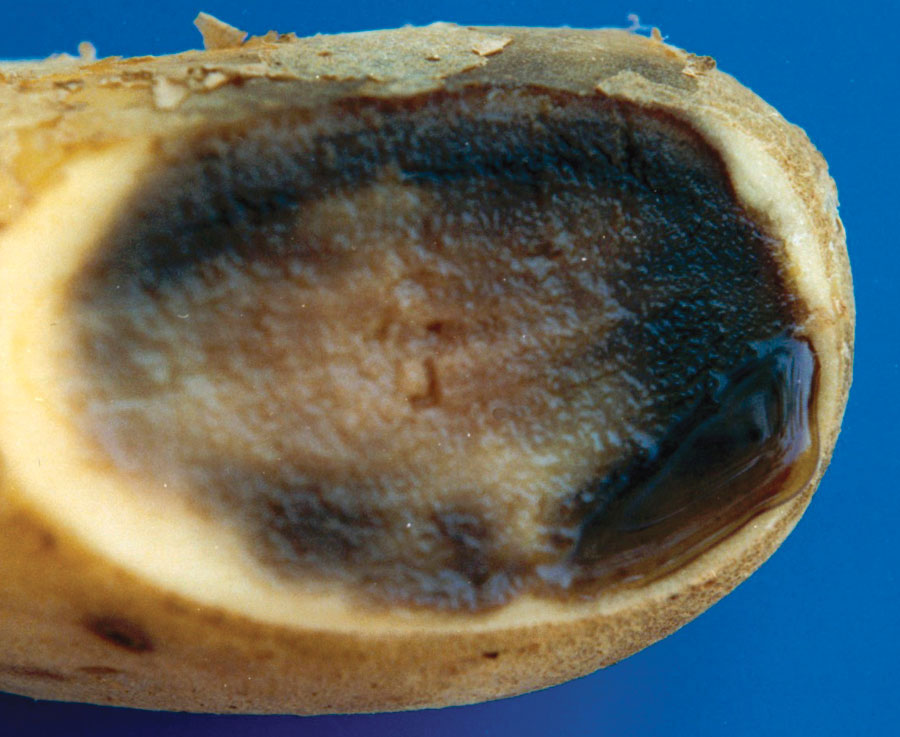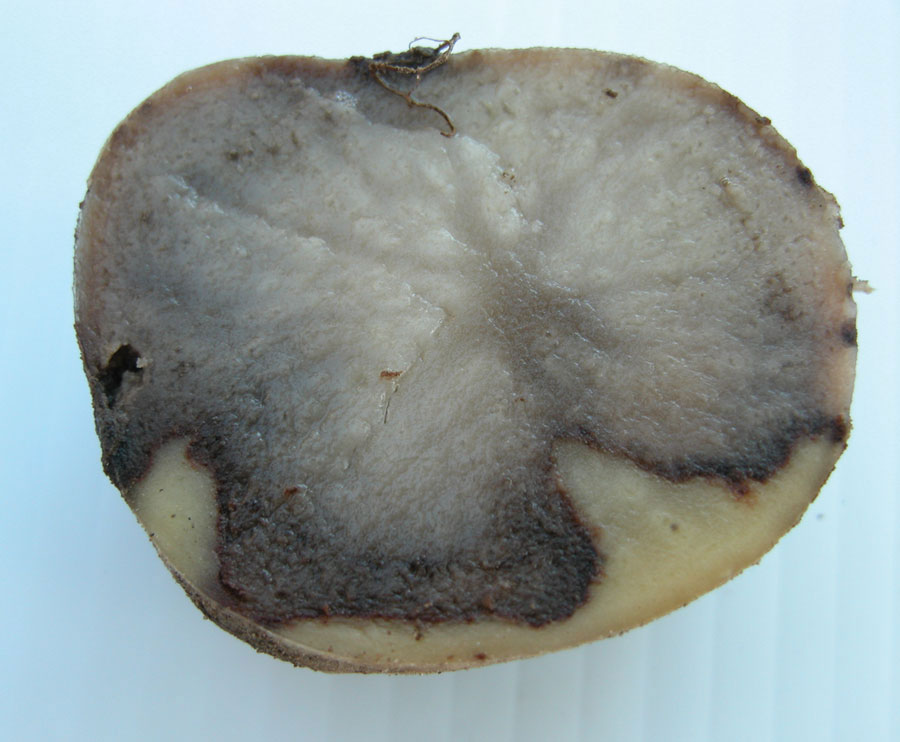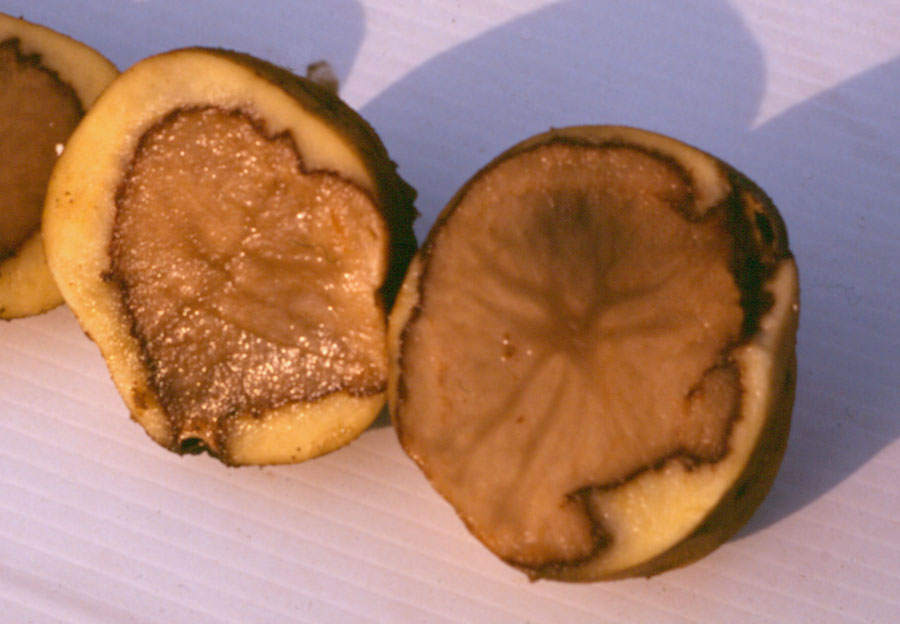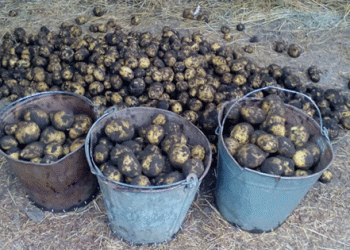The disease known as Pythium Leak, scientifically named Pythium ultimum, is identified by initial tuber symptoms such as grey to brownish lesions with a water-soaked appearance, usually developing around wounds, cuts, or bruises. The infected tuber tissue is cream-colored and turns brown upon exposure to air, with a dark line at the margin of the rot. Over time, the rot turns inky black, and the rotted tissue releases a clear, brownish liquid when pressed. This disease is often confused with late blight and pink rot.
Pythium ultimum, the fungus responsible for Pythium Leak, is widely distributed in soils and attacks the underground parts of various crops. It enters tubers through bruises and wounds, often occurring at harvest. Ideal conditions for its development include hot, humid weather or heat exposure after harvest, leading to rapid development and serious losses in storage, transit, and the market. The disease may also cause decay of seed tubers in warm, wet conditions immediately after planting.
Pythium may cause seed decay and poor crop emergence in warm, wet planting conditions, as well as infection in the field prior to harvest or at harvest, especially in hot, humid weather. In storage, the disease may spread from infected to healthy tubers. It is important to assess disease incidence before washing and bagging potatoes, and to perform a dig test to determine the level of disease incidence.
To manage Pythium Leak, it is important to avoid harvesting under hot, humid conditions, avoid mechanical damage at harvest, and maintain good air circulation while keeping the storage temperature as low as possible.













